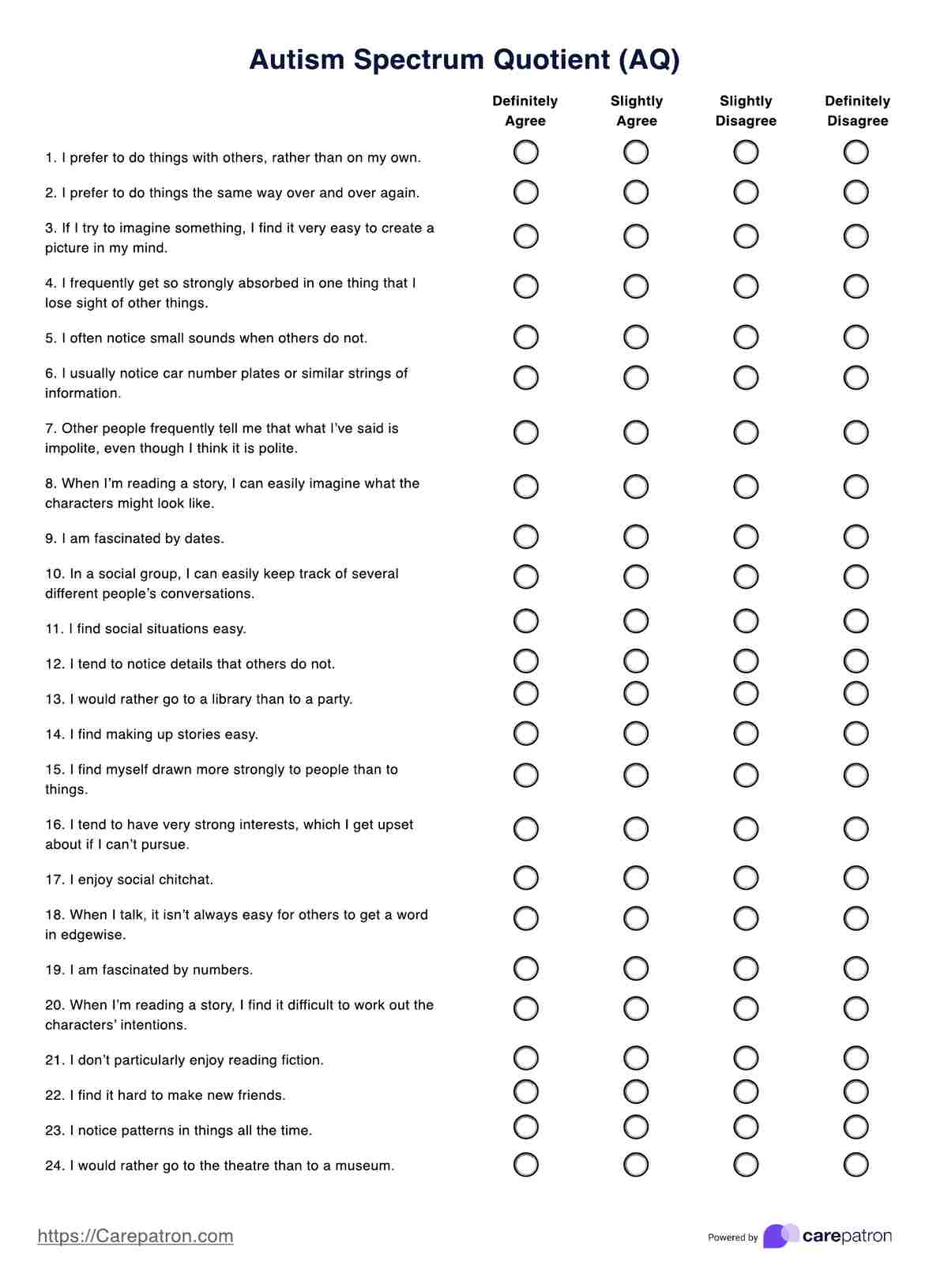It usually takes 10-15 minutes to finish the Autism Spectrum Quotient questionnaire.

Autism Spectrum Quotient
Measure autism traits with the Autism Spectrum Quotient. Learn how to interpret results accurately with professional guidance.
Use Template
Autism Spectrum Quotient Template
Commonly asked questions
ASQ results indicate potential autism traits. Consult a healthcare professional for accurate interpretation, as it's not a diagnostic tool, and context matters for understanding the significance of the scores.
No, the ASQ is not a diagnostic tool. It indicates certain ASD-related traits, but a professional diagnosis requires a comprehensive evaluation by qualified healthcare professionals.
EHR and practice management software
Get started for free
*No credit card required
Free
$0/usd
Unlimited clients
Telehealth
1GB of storage
Client portal text
Automated billing and online payments











